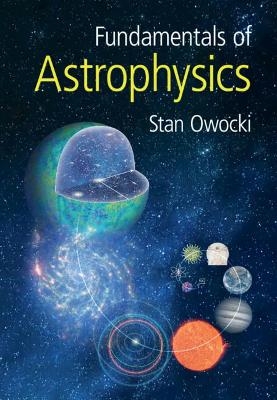
Fundamentals of Astrophysics
Cambridge University Press (Verlag)
978-1-108-84439-0 (ISBN)
This concise textbook, designed specifically for a one-semester course in astrophysics, introduces astrophysical concepts to undergraduate science and engineering students with a background in college-level, calculus-based physics. The text is organized into five parts covering: stellar properties; stellar structure and evolution; the interstellar medium and star/planet formation; the Milky Way and other galaxies; and cosmology. Structured around short easily digestible chapters, instructors have flexibility to adjust their course's emphasis as it suits them. Exposition drawn from the author's decade of teaching his course guides students toward a basic but quantitative understanding, with 'quick questions' to spur practice in basic computations, together with more challenging multi-part exercises at the end of each chapter. Advanced concepts like the quantum nature of energy and radiation are developed as needed. The text's approach and level bridge the wide gap between introductory astronomy texts for non-science majors and advanced undergraduate texts for astrophysics majors.
Stan Owocki is a professor at the Department of Physics and Astronomy at the University of Delaware, following positions at Harvard and U.C. San Diego. He has co-authored more than 300 scientific papers, with his research focussing on mass loss from luminous, massive stars. His teaching at undergraduate to graduate levels includes the development of his flagship 'Fundamental of Astrophysics' course, which form the basis for this textbook.
Part I. Stellar Properties: 1. Introduction; 2. Astronomical Distances; 3. Stellar Luminosity; 4. Surface Temperature from a Star's Color; 5. Stellar Radius from Luminosity and Temperature; 6. Composition and Ionization from Stellar Spectra; 7. Surface Gravity and Escape/Orbital Speed; 8. Stellar Ages and Lifetimes; 9. Stellar Space Velocities; 10. Using Binary Systems to Determine Masses and Radii; 11. Stellar Rotation; 12. Light Intensity and Absorption; 13. Observational Methods; 14. Our Sun; Part II. Stellar Structure and Evolution: 15. Hydrostatic Balance between Pressure and Gravity; 16. Transport of Radiation from Interior to Surface; 17. Structure of Radiative vs. Convective Stellar Envelopes; 18. Hydrogen Fusion and the Mass Range of Stars; 19. Post-Main-Sequence Evolution: Low-Mass Stars; 20. Post-Main-Sequence Evolution: High-Mass Stars; Part III. Interstellar Medium and Formation of Stars and Planets: 21. The Interstellar Medium (ISM); 22. Star Formation; 23. Origin of Planetary Systems; 24. Water Planet Earth; 25. Extra-Solar Planets; Part IV. Our Milky Way and Other Galaxies: 26. Our Milky Way Galaxy; 27. External Galaxies; 28. Active Galactic Nuclei (AGNs) and Quasars; 29. Large Scale Structure and Galaxy Formation and Evolution; Part V. Cosmology: 30. Newtonian Dynamical Model of Universe Expansion; 31. Accelerating Universe with a Cosmological Constant; 32. The Hot Big Bang; 33. Eras in the Evolution of the Universe; Part VI. Appendices.
| Erscheinungsdatum | 04.06.2021 |
|---|---|
| Zusatzinfo | Worked examples or Exercises |
| Verlagsort | Cambridge |
| Sprache | englisch |
| Maße | 175 x 251 mm |
| Gewicht | 720 g |
| Themenwelt | Naturwissenschaften ► Physik / Astronomie ► Astronomie / Astrophysik |
| ISBN-10 | 1-108-84439-1 / 1108844391 |
| ISBN-13 | 978-1-108-84439-0 / 9781108844390 |
| Zustand | Neuware |
| Haben Sie eine Frage zum Produkt? |
aus dem Bereich


